You may not find this terribly rewarding unless you're included here, so this is a good time for casual and random browsers to turn back before they get too caught up in the sweep and majesty of the proceedings and can't let go.
Lexington, Virginia, and the Red Hen (and some more Staunton views)

We're off to visit Lexington, Virginia, 9 November 2019, with just time to book a Peruvian chicken before leaving Staunton.
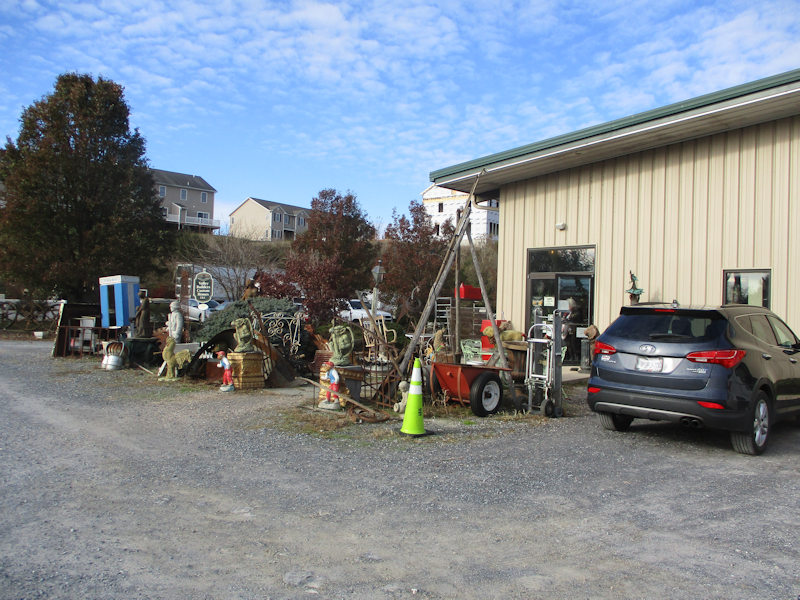
It's 45 minutes south of us on US 11 (the 'Lee Highway'), parallel to I81 and much safer, and it brings us past Duke's Lexington Antiques Center, with its jungle of improbabilities.

Like this imponderable

Including lawn ornaments targeted to a niche audience

This is turning into a pilgrimage, in a way. We're parked, serendipitously, on S. Randolph St., alongside the famous Red Hen restaurant.
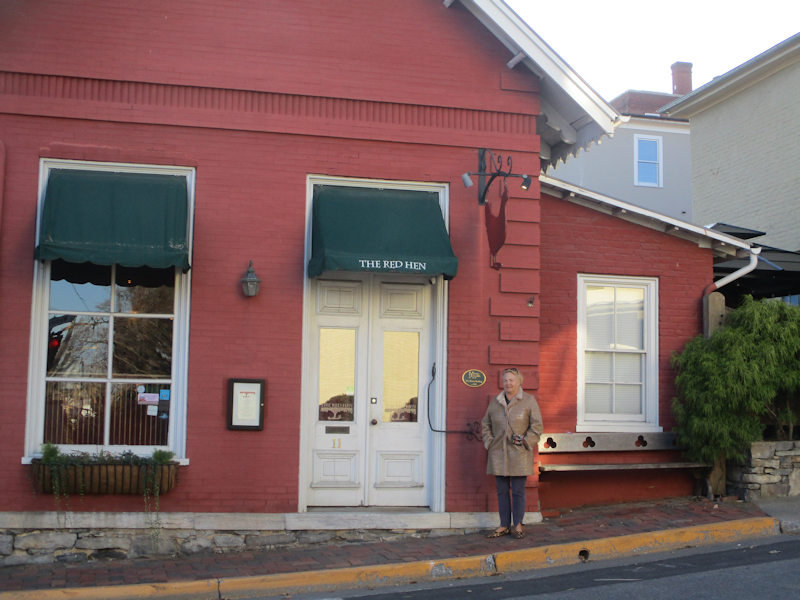
It's closed at the moment, but it was at this new shrine of sorts that in June 2018 the patriotic co-owner and staff members turned away the White House press secretary and her party for, in effect, regularly lying to the public about the president's inhumane actions. The president responded with a tweet to the effect that the Red Hen is filthy inside and out, which health department records confirmed was another egregious lie.

There are a lot of interesting buildings in downtown Lexington (nothing so architecturally grand as Staunton, of course) -- Lexington, now a town of about 7,000 residents, was settled in 1777 and like many new towns of that era was named after Lexington, Mass., of American Revolution fame.

Lovely sentiments, no less lovely for probably being apocryphal ('bacteria' is a mid-19th century term)
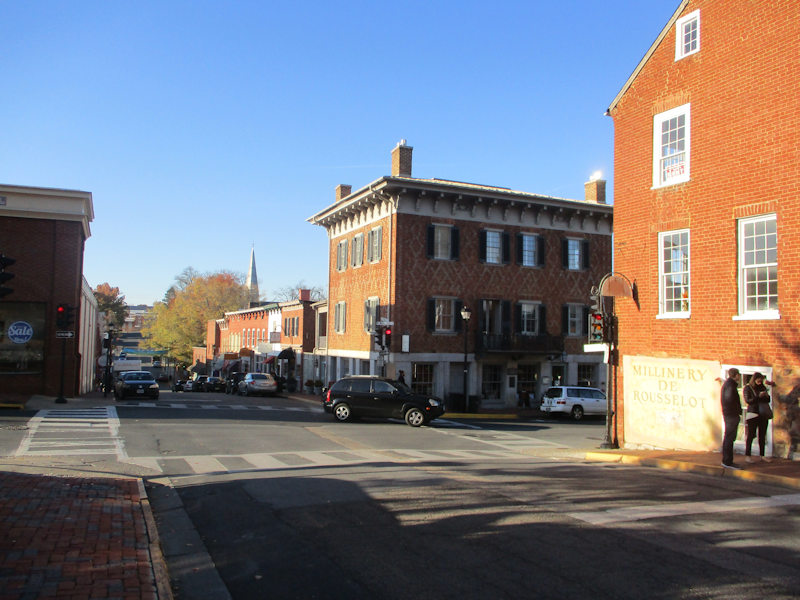
Coming up to the town centre, S. Main and W. Washington
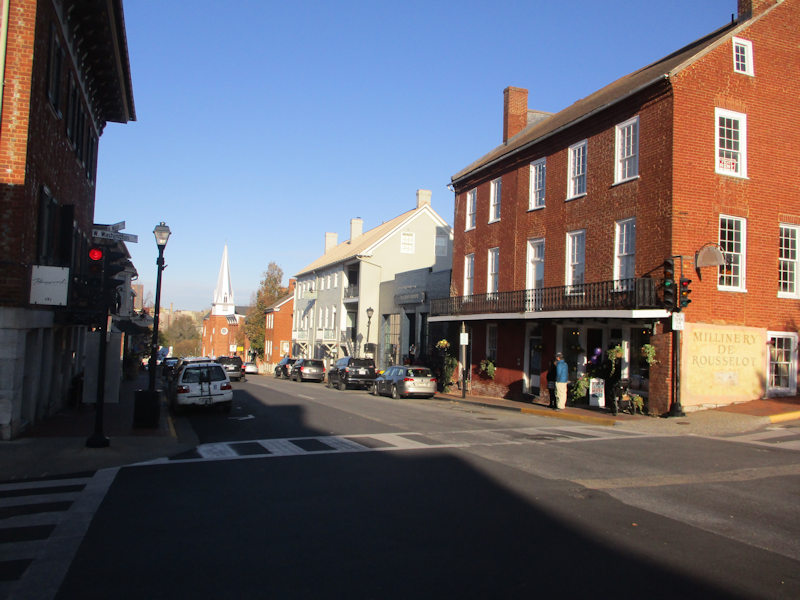
Looking northeast down S. Main St.

The Robert E. Lee Hotel (named after an important local dignitary), renovated and reopened in 2014.

That's the Lexington Presbyterian Church (in a style much evolved from the old Scottish Kirk of the 16th century), backed up onto the 'Barracks' of the Virginia Military Institute. Perhaps that's not coincidental.

Central Lexington seems to share vintage Staunton's fascination with residential towers and wraparound verandahs.
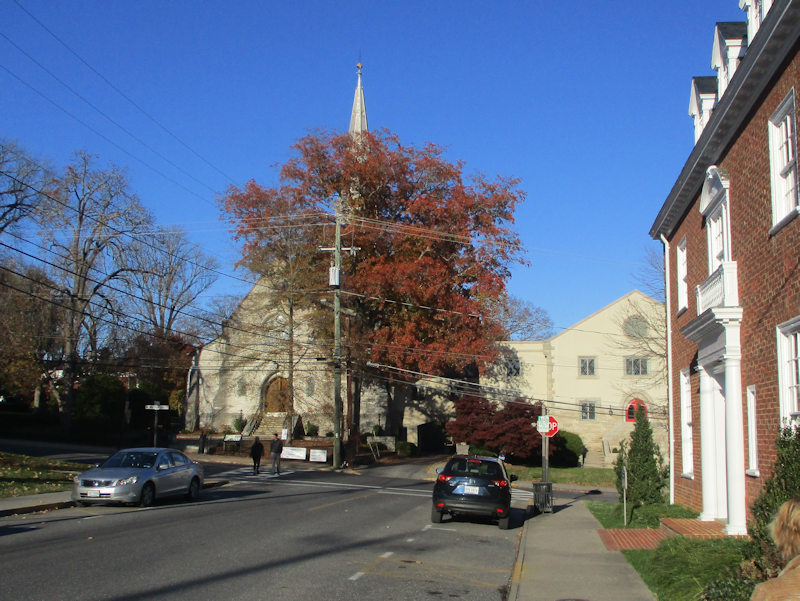
Never pass up an Episcopal church when you're passing one.

Episcopal churches may not always be outstanding, but they will never be embarrassing.

See? One doesn't have to be religious at all to appreciate the dignity and good taste at work here. (I once had two students in Oklahoma, ex-GIs, who'd had a theological falling out and had set up as pastors of competing churches side by side in a suburb, both single bedroom cinder-block bungalows, one of them painted pink. They were both supporting their ministries with the GI education bill and were convinced that God wished me to pass them for the course without their having shown up for it.)

Monumental architecture at the corner of Main and E. Washington. We're pretty much confining our explorations to S. Main St., so as not to prejudice our next visit here, with more time on our disposal.
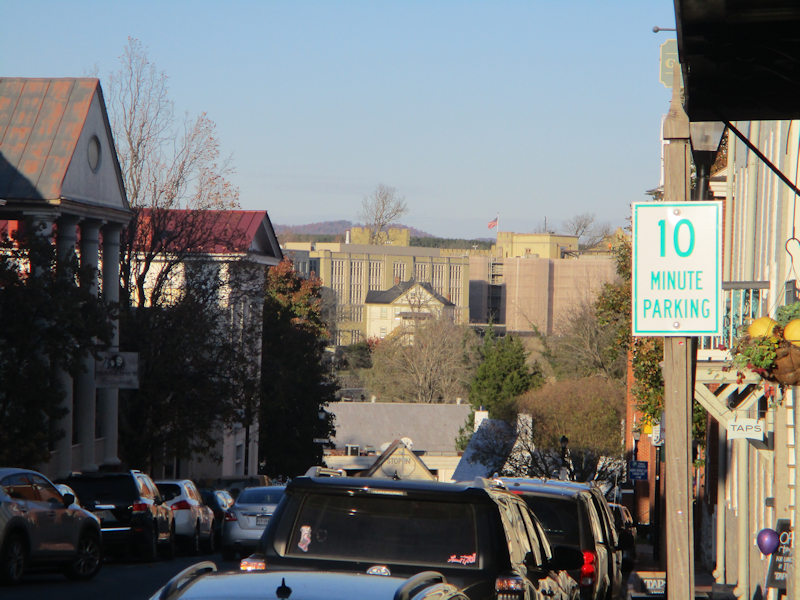
Here's a zoom-glance down Main St. -- good grief. That can only be the Virginia Military Institute its own good self.

Lexington's prosperity depends largely upon education and tourism, and the education part includes Washington and Lee University and the venerable Virginia Military Institute (VMI); the tourism part is not unrelated and has mostly to do with the US Civil War, with various military museums, including the only house that Gen. Stonewall Jackson ever owned, when he was a teacher at the VMI before he hit the big time.

The historic downtown also helps out with the tourism angle, and there are some pretty noteworthy burials to be seen, too, not only Stonewall Jackson but Gen. Robert E. Lee himself as well. Some famous films have been shot here, too, starring respectively Ronald Reagan, Pat Boone, and Richard Gere.

The Jacob Ruff House from 1829, in the 'Valley Federal style', was formerly the showroom of the family's hat factory next door. Pres. Millard Fillmore once visited.

Peering farther up the street, at The Georges ('upscale, refined hotel with dining')

The Virginia Military Institute, asserting its undeniable authority over the northern end of the town -- 'The West Point of the South', a university-level college for cadets who are all ROTC members, is known for its 'strict military discipline combined with a physically and academically demanding environment' [ouch]. Founded in 1839 on the site of a militia arsenal maintained in case of foreign invasion or slave revolt, it first graduated 16 cadets in 1842, and a youngish Stonewall Jackson was a professor Experimental Philosophy here from 1851.
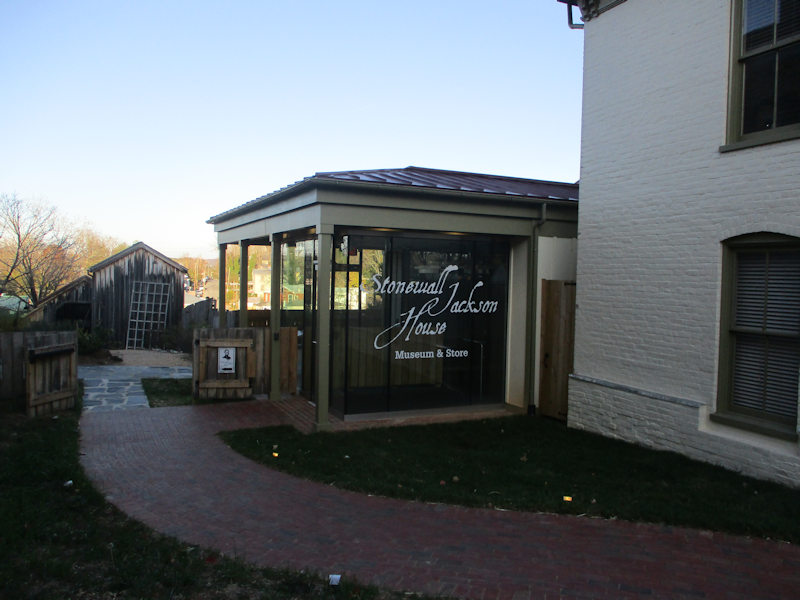
Speaking of whom, Jackson's home has been renovated into a small museum, very popular with Civil War Buffs. Jackson himself is most renowned for his leadership of the Shenandoah Valley Campaign of 1862, but during the Civil War, VMI cadets and alumni won a good deal of notice on their own. Cadets were called up in May 1864 to march 80 miles north and join the Battle of New Market, and the rebel commander, to fill a hole in the lines, is said to have said 'Put the boys in, and may God forgive me for the order'; ten cadets were killed, but their unit was instrumental in scoring a victory for the rebel side.

A month later, in June 1864, the Union General Hunter got to Lexington and destroyed the VMI campus, along with Lexington; his chief of staff, named Strother, who'd urged Hunter to bombard the town, later restructured the VMI and served on its board.

It's closed today.

Back to the car and another look at the Red Hen

The Interstate 81 back north 'down' the Shenandoah Valley
Some additional views of Staunton, to make up the free space

The Masonic building on W. Beverley, seen from Johnson St by the Wharf district, 13 November 2019

We're heading west out of town on Johnson St, an exploration of sorts to see what Staunton's got to say for itself out this way. This is the "Newtown" Historic District.

A proud flag (13 stars seems dated) -- 18 Church St, just off W. Johnson; the brochure says that the 'Eastlake style exterior decoration' is rare in this area.
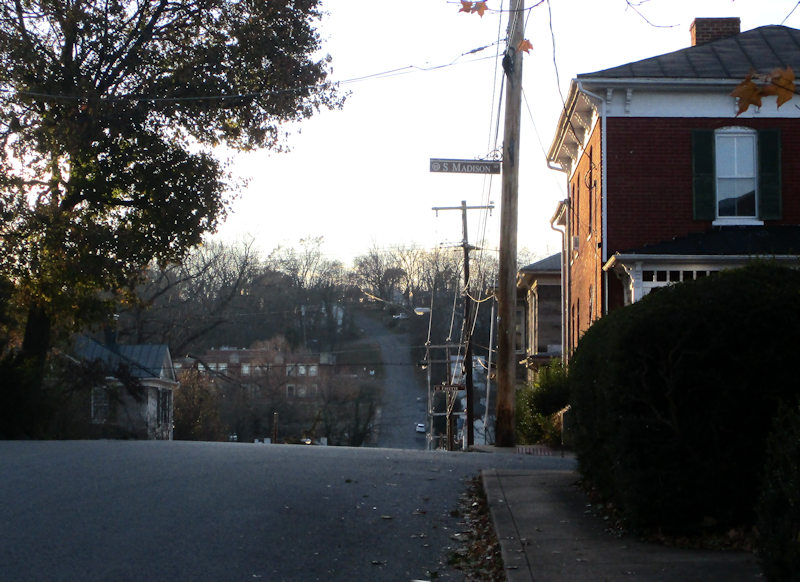
Oh no. But it's got to be done.

On Fayette St

Staunton abounds in interesting buildings -- this is a three-apartment town house on W. Johnson and Fayette, built in one piece in about 1909.
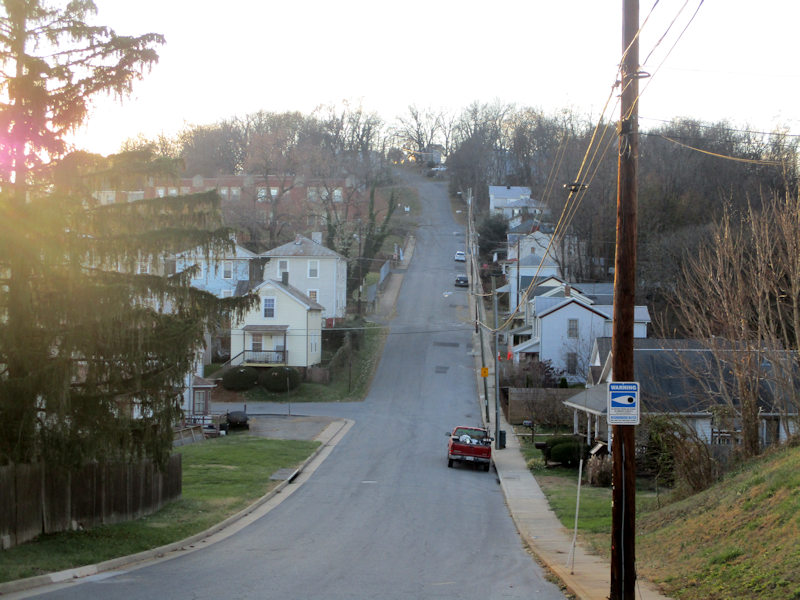
We're committed -- the W. Johnson St. challenge

The difference between a drug free school zone and a non-drug free school zone may be the sign. But it's a fine thought.

A glance back at Staunton in the late afternoon, with the Blue Ridge mountains on the horizon.
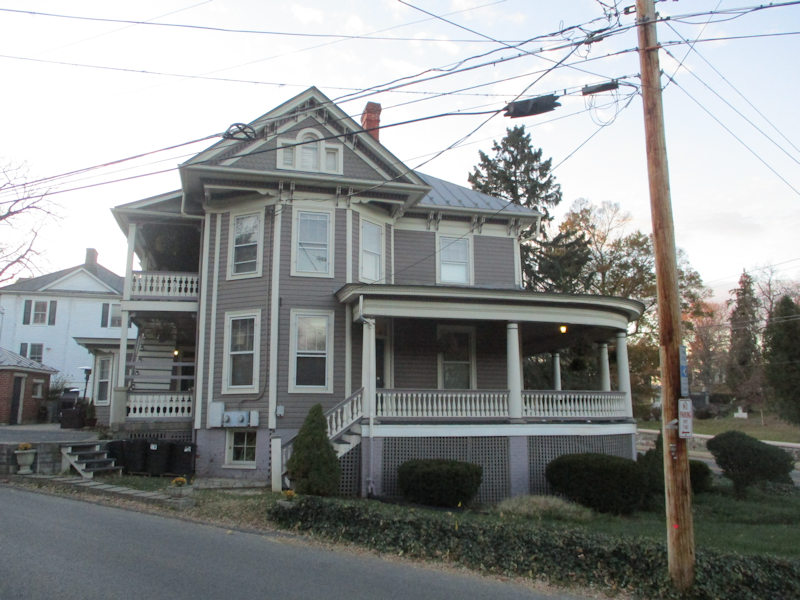
Staunton's nearly ubiquitous half-wraparound verandas (traditional, we've been told, in the American South). Our Johnson Street Western Trek ended in a dead end at the top of the hill, facing westward over the Montgomery Hill public park. So we've gone down Trout St towards the Thornrose Cemetery, and we're now at the intersection of Montgomery Ave and W. Beverley, at the home of John's Computer Service, across from the cemetery.


And thence home on W. Beverley. This was apparently the home of the Allen Chapel African Methodist Episcopal Church, which has since moved on up the hill.
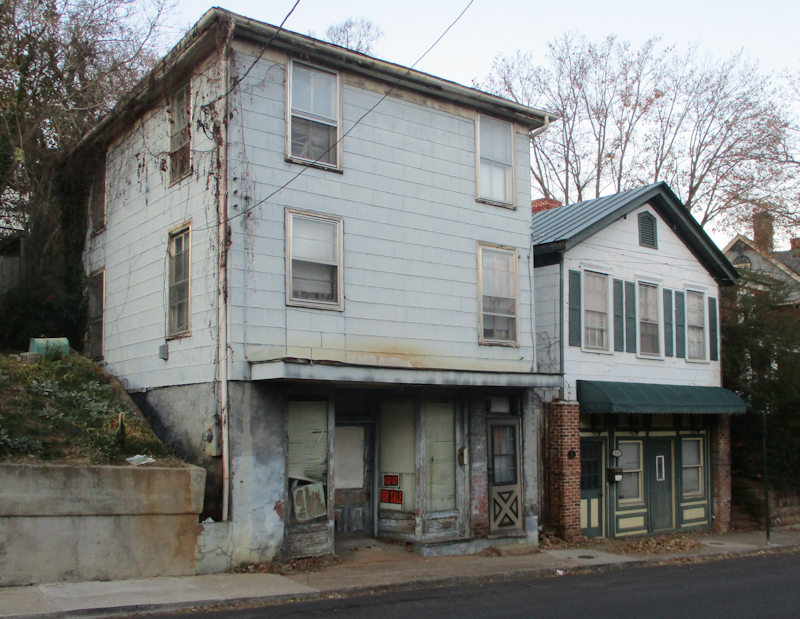
We're waiting for the asking price to keep dropping.

If we were younger, and handier with tools . . . a bargain, surely. We're on N. Jefferson St now.
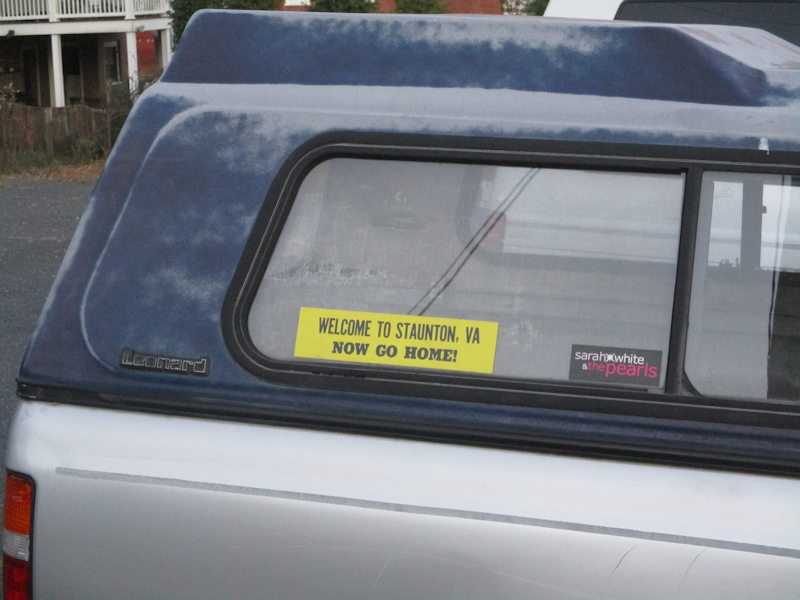
One of the friendliest towns in the famously hospitable American South
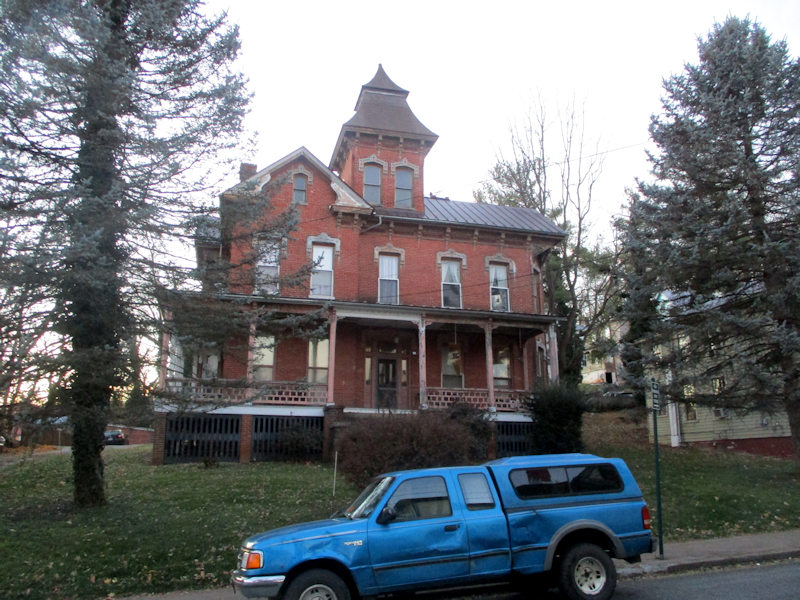
Towers and verandas. Still on N. Jefferson

Recently renovated, evidently. The Google Maps street view of that place shows a total wreck with boarded up windows.
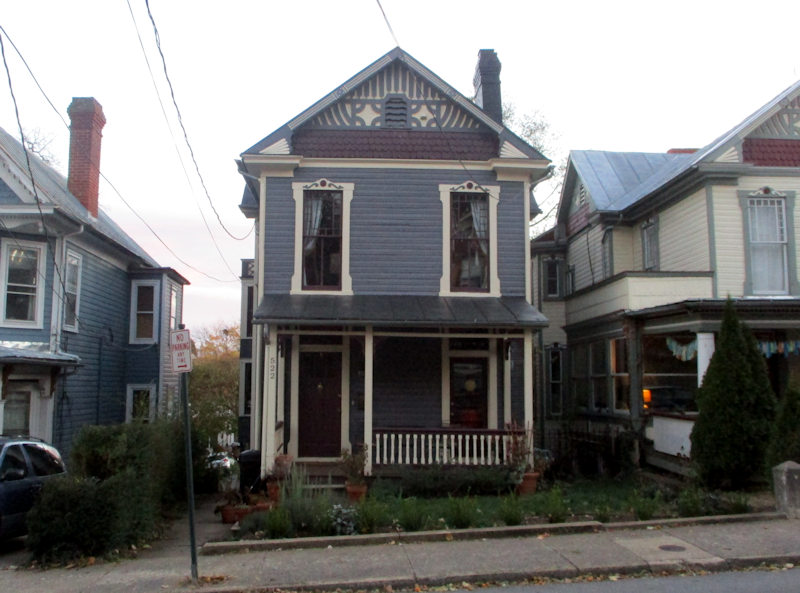
Streetloads of near-mansions and former-mansions and a few really small houses, where the verandas are just 'porches'.
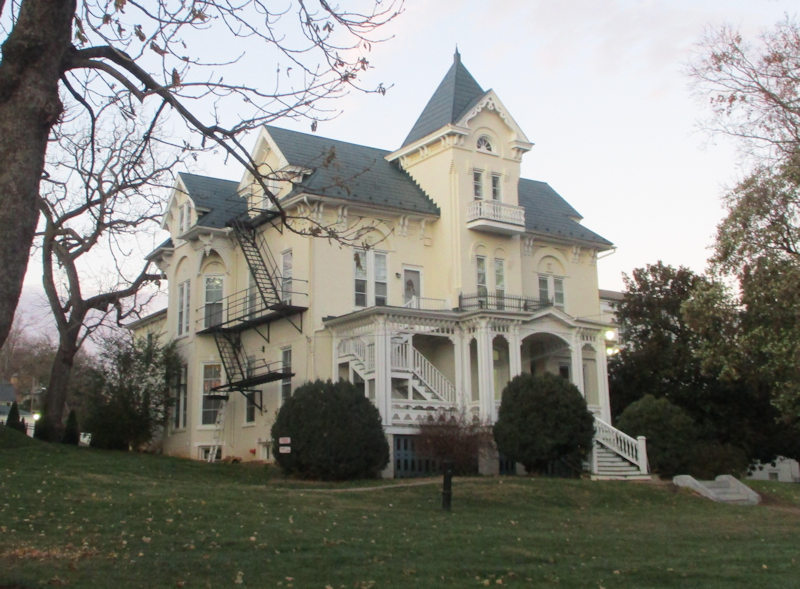
One of the buildings of the Stuart Hall School on W. Frederick St
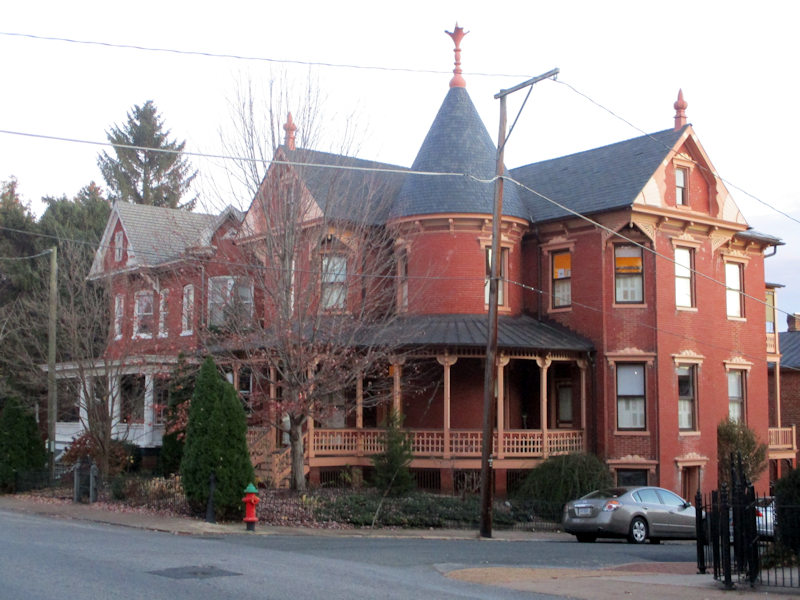
Towers and verandas. A block of flats on the corner of W. Frederick and N. Washington, dating from 1890 to 1920.

And across the street from us, on N. Augusta St, next to the Roman Catholic church, there's this once elegant building with its ground-floor pool hall/restaurant.
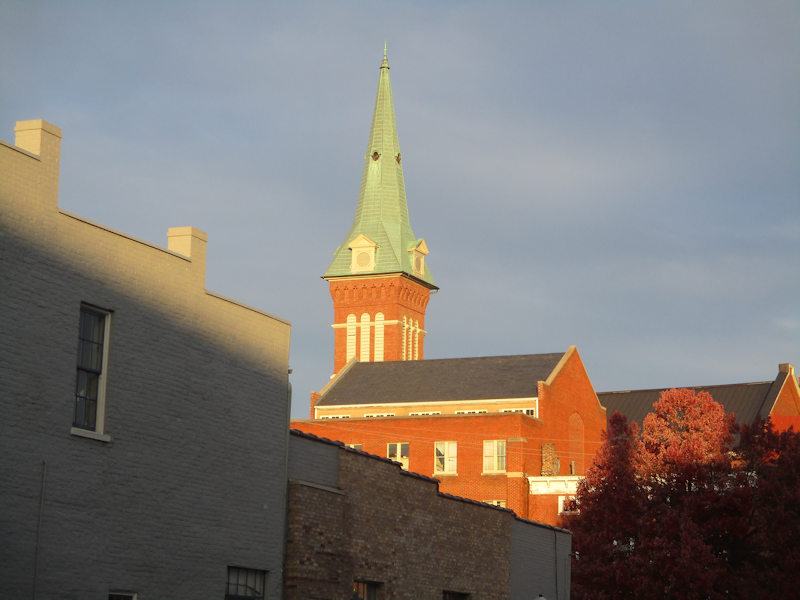
The Presbyterian church just up E. Frederick from us

The 'Marquis Building', now a cigar store and meeting place for cigar fans on Beverley and Augusta, was once the offices of T. J. Collins, the architect who designed or remodeled over 200 buildings in Staunton between 1891 and 1911. To the extent that Staunton is architecturally distinctive, that's mostly down to T. J. Collins.


The landmark Stonewall Jackson Hotel, built in 1924 and restored in 2005. Presumably in an unfamiliar price range for us.
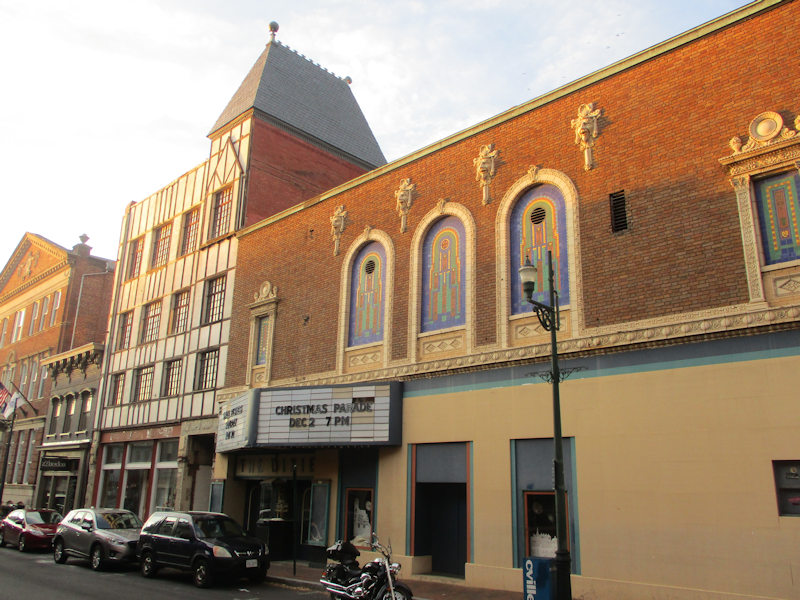
The so-called Dixie Theatre, said to have been gutted by fire in 1936; the nonprofit Staunton Performing Arts Center had been trying to make it operational again, but it's recently been bought by the nonprofit Arcadia Project, which has found some funding and is seeking further grants to create 'an all-inclusive community cultural center' with 'theaters, event spaces, media studios, classes, workshops, cultural programs and more' (Staunton News Leader, 17 Nov. 2019).
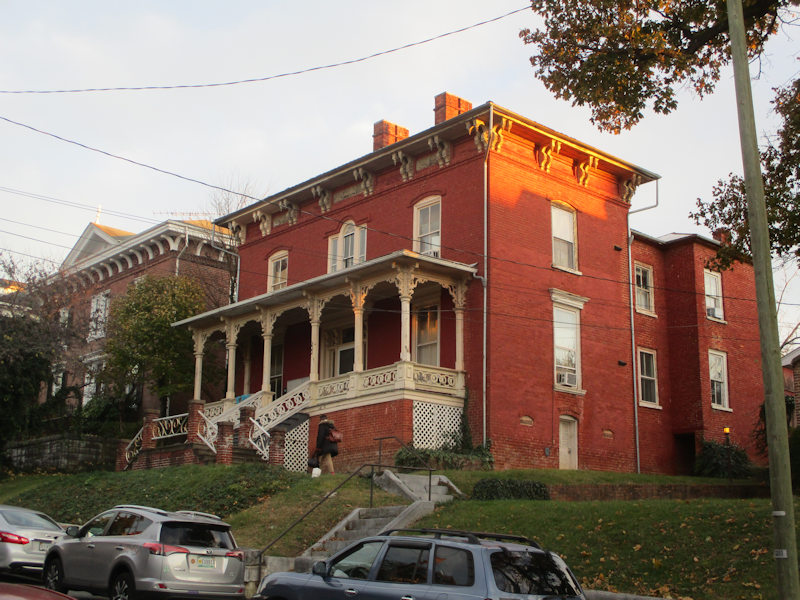
Up the hill on E. Beverley
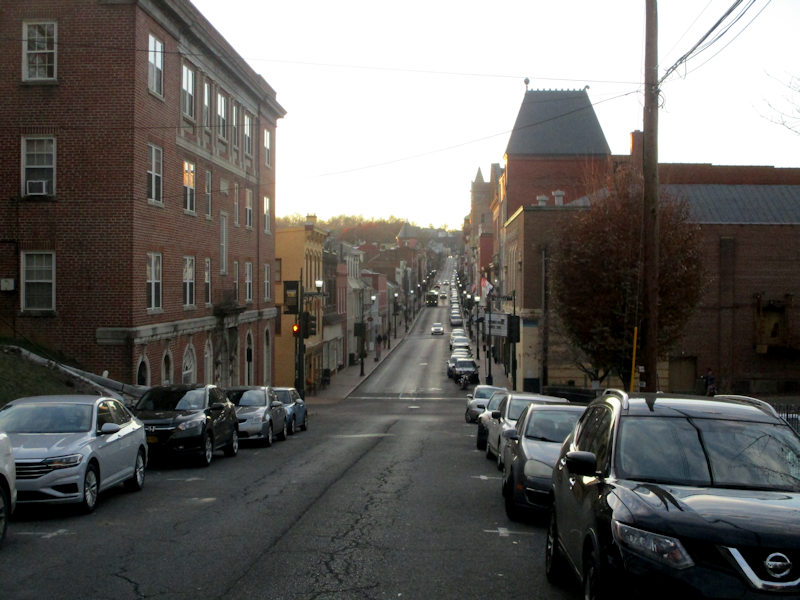
Staunton town centre, East and West Beverley

The Temple House synagogue, dating from 1925
Next stop: Sherando Lake (again)


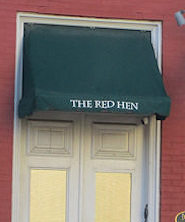 Dwight Peck's personal website
Dwight Peck's personal website























































